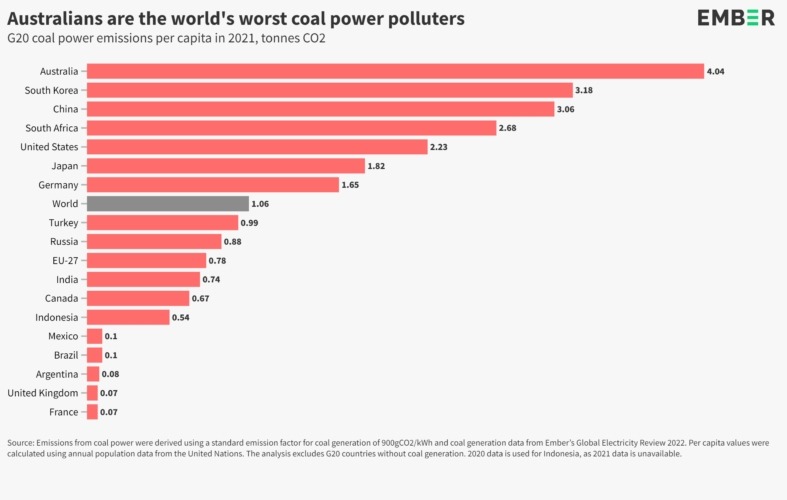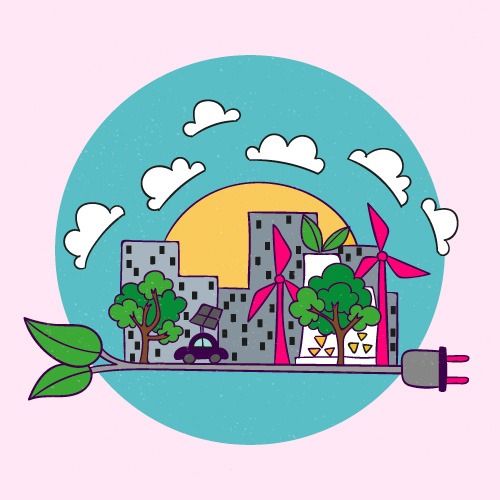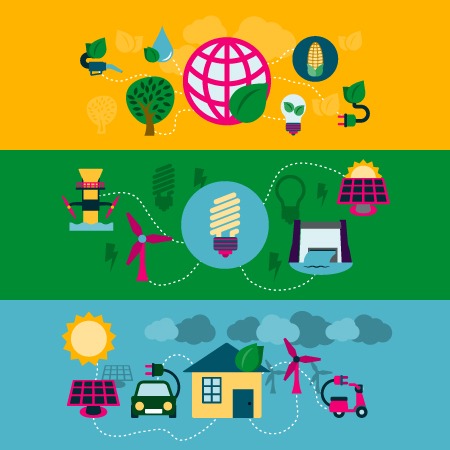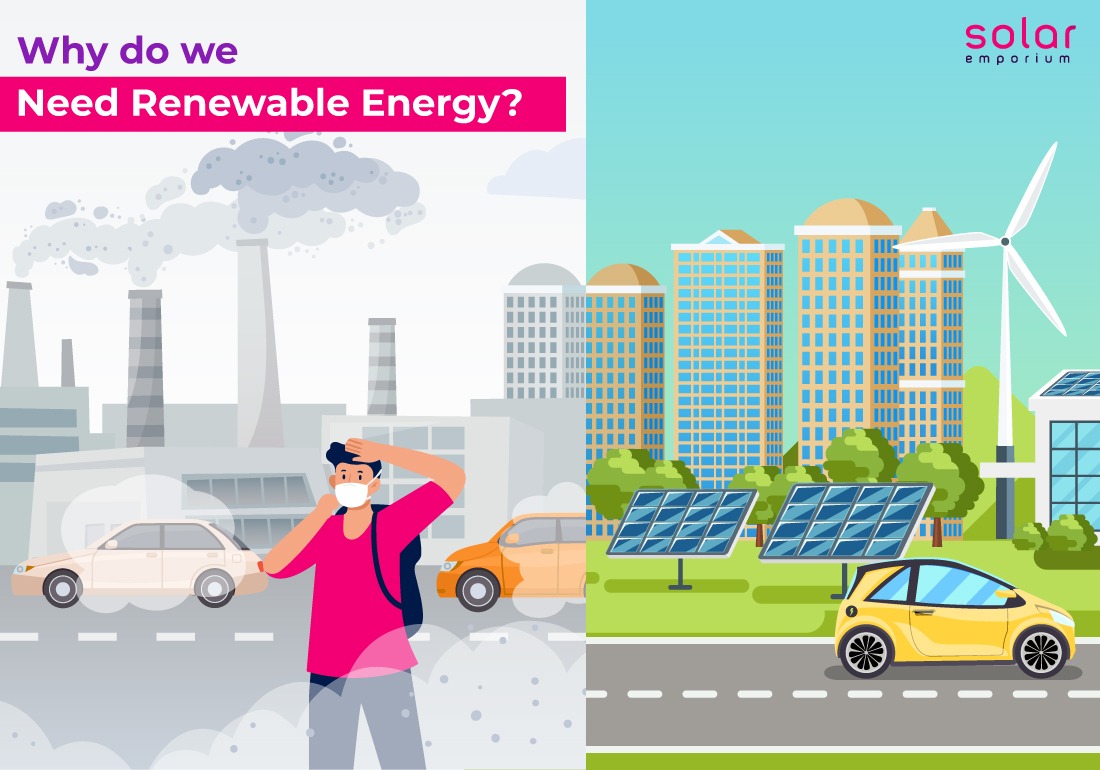Electricity generation is the leading source of industrial air pollution. Most of our electricity is generated by coal, nuclear, and other non-renewable power plants. Producing energy from these resources has a significant environmental impact, polluting our air, land, and water. This simply answers why we should switch to renewable energy from fossil fuels.
But why do we need renewable energy? Can renewable energy solve the environmental struggle we are facing? This article will give a detailed explanation of this particular topic. So, let’s begin the article by taking Australia as an example.

According to UK-based thinktank Ember, Australia is the second most co-dependent country for power generation. Australia’s greenhouse gas pollution from coal was higher than any other developed country in 2021. However, the boost of solar and wind energy usage reduced pollution significantly.
What is Renewable Energy?
Before knowing the importance of renewable energy, we need to know what renewable energy is. Simply put, renewable energy is clean energy derived from natural resources. Most renewable energy is sustainable. And Australia’s renewable energy sector accounts for about 32.5 percent of overall energy generation.
Check out our previous blog Main Source Of Renewable Energy In Australia, for a detailed overview of Renewable Energy.
Common Forms of Renewable Energy

- Solar Energy
- Wind Energy
- Biomass
- Geothermal Energy
- Hydro Energy
- Ocean Energy
Brief History of Energy Usage
The first energy source was the sun, providing both heat and light. A lightning strike later started a fire. Fire was then used for a variety of purposes as an additional source of heat and light. They used fire in cooking too.
Humans discovered they could use sails to harness wind energy for transportation over 8,000 years ago. Later, it used wind energy to power the first wind farm, which consisted of windmills turning water wheels to grind grain.
Prior to 1850, wood-fueled fires were the primary source of heating, cooking, and producing steam for railroad engines. Water, wind, coal, and manufactured natural gas were also used at the time.
Surprisingly, the Chinese used natural gas as early as 500 BC. Bamboo was used for piping. The gas was discovered leaking from the ground for use in boiling seawater to remove the salt. That’s right, the world’s first natural gas pipeline!
Engineers in ancient Rome created a heating system known as a hypocaust around the same time. When they built houses, they added open space beneath the floor, so fire could pass hot air through and heat the room above. Romans used this process to warm rooms and heat baths. And it became a common addition to new construction in the region.
In 1816, streetlights in Baltimore, Maryland were powered by manufactured natural gas made from coal. Coal was the primary fuel source from 1850 to 1945 due to the Industrial Revolution. Heat was provided by wood, and lighting was provided by natural gas. With the rise of coal, the use of water and wind energy decreased.
As electricity became more common in the late 1900s, oil and natural gas became the primary fuel sources at that time. Coal-fired power plants also became regular then. Nuclear, solar, water, and wind have played a more prominent role in energy production since 1945. Furthermore, alternative energy sources such as geothermal and biomass are becoming more popular, with technological advancements improving viability.
Why do We Need Renewable Energy?
We have already mentioned that renewable energy is clean and healthier for the environment. But there’s more than meets the eye. Renewable energy has numerous other benefits. Clean energy produces no greenhouse gas emissions or air pollutants that fossil fuels such as oil, coal, and natural gas produce. Renewable power can only salvage the environmental impacts crude oil from fossil fuels has caused.
It also diversifies the energy sector and its supply and reduces dependence on imported fuels. And automatically, it is creating economic development and jobs in manufacturing, installation, and more. Hence, it is the perfect time to invest in renewable energy. Let’s discuss the benefits in detail in the next section of this article.
Benefits of Renewable Energy

- Clean and efficient energy usage – Renewable energy doesn’t negatively impact our environment. Therefore, it’s a better and cleaner way of electricity generation. As the energy is clean, it ought to be more efficient than fossil fuel usage.
- Less global warming – Every human activity is overloading our earth with co2 emissions, and greenhouse has. Ultimately, it’s causing our atmosphere to warm up. Renewable energy sources are the only elements helping to create less global warming.
- Improved public health – Unlike fossil fuel, clean energy doesn’t contribute to air and water pollution. More clean energy usage will automatically improve public health significantly.
- Limitless energy – Fossil fuels might have been convenient for us till now. But we are forgetting that this conventional energy is finite. It is assumed that in the next 51 years we will no longer have the oil to support our power grids, transport, or keep ourselves warm. Renewable energy is our only way out, as its energy is infinite and limitless.
- Jobs and other economic benefits – The energy transition is underway in full swing. Whether people want it or not, the sector is booming. It is diversifying the market and creating sustainable and improved jobs for people. People working in the renewable sectors are getting many incentives and economic benefits.
- Stable energy prices – As renewable energy is inexhaustible, it will not go anywhere. It will always be available for our use, maintaining a stable and affordable cost.
- Energy independence – Renewable energy is freeing us from energy enslavement. Since we will have limitless power, we will no longer have to worry about it. Thus, creating energy security and independence.
- Easier electricity supply – Many energy-related businesses have already shifted to the renewable sector. The abundance of power provides a constant and more accessible electricity supply. Indeed, it is a profitable sector.
Is Energy Transition Really Worth It?
Even though renewable power is abundant with many visible benefits, people still need to be convinced to use it.
Opponents of renewable energy enjoy emphasizing the variability of the sun and wind in order to increase support for coal, gas, and nuclear plants. On the contrary, it can more easily operate on demand or provide continuous power. The argument is used to undermine large investments in renewable energy. They are posing a rhetorical barrier to increased wind and solar adoption rates.
However, the reality is much more favorable to clean energy. Solar and wind are highly predictable. And when distributed over a large enough geographic area with complementary generation sources, they are highly reliable. Modern grid technologies such as advanced batteries, real-time pricing, and smart appliances can also assist solar and wind. These can be essential components of a high-performing grid.
So, if we put things into perspective, YES! Renewable energy and energy transition is worth it. It is worth our atmosphere and our people.







